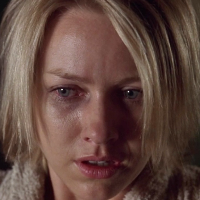jjgp1112 wrote: Sat Feb 08, 2025 5:55 pm
I think the bigger issue is that Toriyama was a discovery writer who stumbled into interesting storylines, not to menton was a master of telling stories through fights, and so having to just outline a story from beginning to middle to end and leaving the fights as just "Stuff happens" in between exposition pretty much kneecaps a lot of what makes DB work. It explains stuff like the weird back and forth of fighting and retreating in the Zamasu arc, for example.
Again, though, this just highlights my point about how people underestimate Toriyama severely. He was a discovery writer, but that does not mean he was just randomly stumbling into storylines. He was follows his characters' authentic actions and links that back to the story's themes, allowing those two details to weave the narrative more than anything – but he is clearly thinking these things through more than he lets on. I won't touch on Super, since he didn't actually write that himself, but let's look at the 22nd TB.
I would argue that there are three themes which define Dragon Ball as a story: self-betterment for self-betterment’s sake, accepting that there will always be someone better, and passing the torch onto the next generation. Through Tenshinhan, the 22nd Tenkaichi Budokai is able to embody each of the series’ three core tenets, crafting one of the most thematically cohesive arcs in the franchise, but it's really his fight with Goku that ties his development together.
Goku represents the steadfast philosophy of Kame Sen’nin, fighting for the pure thrill of battle while bettering himself in every sense along the way. Tenshinhan represents the fragile philosophy of Tsuru Sen’nin, fighting for domination and to kill, but insecure enough to linger on the words of the Muten Roshi; together, they are the next generation, paving the way for the future of martial arts; and against one another, they are the someone better preventing each other from stagnation.
Most importantly, Goku’s fight with Tenshinhan demonstrates just how well Dragon Ball develops its cast through action. While the fight is rooted in the series’ themes, it is implicitly about Tenshinhan’s redemption. Each major beat of the fight features Ten slowly stripping away his Crane School way of thought. Initially, he fights Goku with the intention of killing him. After Goku reveals that he was holding back & starts using his full strength, Tenshinhan cannot help but feel excited at the prospect of being challenged by Goku. Once Chaozu begins to interfere with the fight by paralyzing Goku, Tenshinhan finally admits to himself, and to his master, that what matters most to him is fighting and winning legitimately.
Tenshinhan does not want the Crane School to interfere, he does not want Goku to die, and he no longer wants to be an assassin. In fighting Goku, Ten gradually realizes what it means to be a pure martial artist. That said, this is not Tenshinhan embracing Kame Sen’nin’s philosophy. While it does influence his decision to abandon Tsuru Sen’nin, he rejects both schools of thought, fighting purely for himself. In that sense, Tenshinhan ushers in the next generation of martial arts, relying not on established philosophies, but still taking enough influence to honor the past while walking his own path.
There is a theatrical quality to how Toriyama develops his characters. Dragon Ball does not linger overtly on Tenshinhan’s development, letting nuance run its course. His beats of development are often relegated to single panels, quickly showing how Goku is influencing him. Toriyama’s simpler take gives Ten’s growth a considerable amount of humanity. Kame Sen’nin’s words clearly shook him during the semi-finals, and everything Goku does in the final match serves to push Tenshinhan as a martial artist and a person.
Even later DB arcs like the Freeza arc do a great job at paralleling details like Goku and Piccolo's own heritages.
Piccolo spends most of the Freeza arc out of commission, which can make his sudden re-introduction for the final battle a little odd. It's not random, though, and bringing Piccolo in for the battle against Freeza serves a few crucial thematic purposes. For one, it's just important that a Namekian gets to fight Freeza. Although Piccolo doesn't manage to beat him, he proves that Freeza underestimated the Namekians. More importantly, Piccolo's arc in the Namek saga is a mirror of Goku's.
Both Piccolo and Goku begin the Saiyan arc by learning they are aliens. During the Freeza arc, they learn more about their roots and come to embrace them in a symbolic transformation. Where Goku literally transforms into a Super Saiyan, Piccolo "transforms" into a new being by assimilating Nail. Fusing with Nail also gives Piccolo his memories and a deeper understanding of Namekian culture, which he brings into his battle against Freeza.
Piccolo goes from a Namekian who forgot his name, to a Demon King & God, and finally a redeemed warrior who returns to his homeworld to fight on its behalf. Piccolo doesn't have the deepest connection to Freeza, but after everything the Namekians suffered, it's cathartic that it's a Namek who pushes Freeza to actually take their battle seriously. There's also a nice parallel during the final battle where Piccolo briefly stalls Freeza as Goku charges the Spirit Bomb, not unlike when Goku stalled Raditz for Piccolo at the start of the Saiyan arc.
I'm confident someone will say I'm reading into things too much, but in my opinion, people don't read into Dragon Ball or Akira Toriyama's writing nearly enough.



